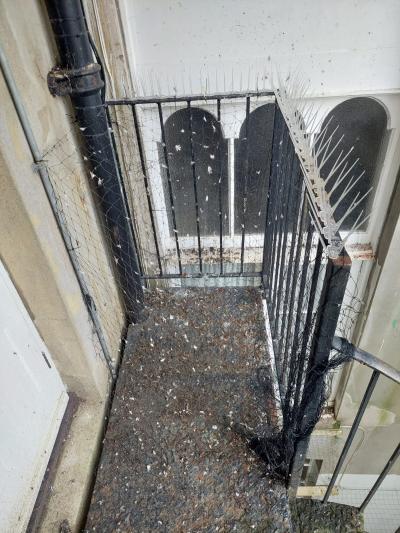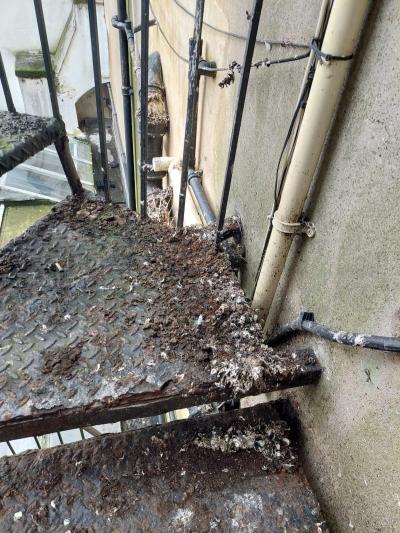Cleankill Pest Control surveyors visit many different types of premises every day and are often shocked at what they find. This was certainly the case when Surveyor Sam Boylett visited a building in Hove, East Sussex. He was specifically asked to look at an emergency fire escape that had been ‘proofed’ by the building manager. The building manager had received a quote for bird proofing from a competitor they thought was excessive and so decided to take matters into their own hands. The photos show the outcome.
You can see from the photos that the poorly installed netting has not stopped birds from entering and there is excrement everywhere. In addition, there was evidence of birds getting tangled in the netting.
The “door” that was installed using CDs as a ballast weight is against regulations as it may cause people to get caught in it in the event of a fire. A door opening both ways should be installed.
Pigeons take advantage of the warmer weather to sit on ledges and pipework while their foulings fall to the floor below. In this case, the foulings have created a dangerously slippery surface on the fire escape. It could be extremely dangerous if the residents had to use the stairs in an emergency. Bird spikes have been installed on handrails which could cause injuries to users if there is a fire.
It’s important for building managers and owners to consider the consequences of not using a professional service in order to save money. In this case, there could have been a danger to life and the person responsible may have found themselves in hot water if the worst had happened. We were pleased to be called in for our professional advice and to quote for sorting this problem out. We always advise obtaining several quotes.
Pigeons are the most unhygienic and messy birds and actually carry more diseases than rats. They nest on their poo and attract mites. Nearly all pigeons carry the bird mite – a tiny insect that feeds off the bird, but will also makes humans itch and scratch. Pigeon fouling and nest materials also provide a home for many other insects such as clothes moths, carpet beetle and mealworm beetles. They breed prolifically and a breeding pair can produce young three or four times a year.



